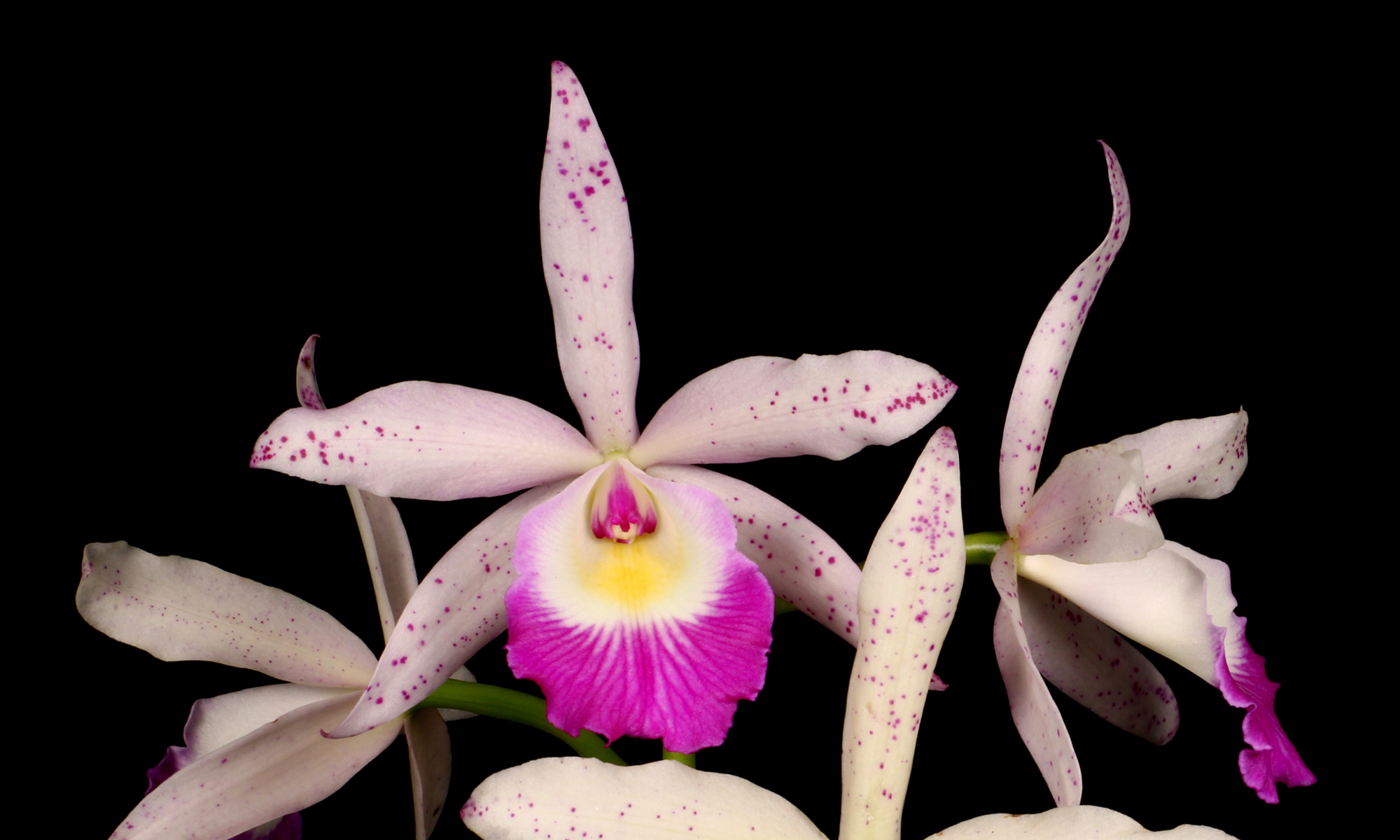Reproduced from Florida Orchid Growing with the kind permission of Dr. Martin Motes, this monthly guide provides general recommendations for orchid culture in South Florida.
JANUARY
- Water judiciously, only early in the day.
- Run plants on the dry side to preserve the possibility of using water for cold protection.
- Check irrigation system in advance of cold.
- Flush excess fertilizer salts from cattleyas and other sympodials.
- Spray for mites, then spray again in 7-10 days.
FEBRUARY
- Spread snail bait lightly. Spread again in two weeks.
- Spray for Botrytis using Florida recommended fungicide or bicarbonate of soda.
- Begin spring potting.
- Watch for mites.
MARCH
- Watch out for mites.
- Spray for Thrips.
- Repot genera emerging from dormancy: catasetums, calanthes, and soft cane dendrobiums.
- Continue general repotting of cattleyas, oncidiums, hard cane dendrobiums, etc.
- Make top cutting of teretes, semi-teretes and reed stem epidendrums.
- Move landscape plants gradually to brighter light.
- Apply time release fertilizer.
APRIL
- Full speed ahead with repotting.
- Water heavily and well.
- Don’t forget to fertilize.
- Spray for mites and Thrips.
- Naturalize excess divisions in the garden (or pot up and bring to our auction in October!)
MAY
- Space plants properly for good air circulation.
- Trim excessive foliage on trees and shrubs.
- Repot Phalaenopsis out of sphagnum.
- Finish repotting of various genera.
- Reset vandaceous plants, remove keikies.
- Water heavily early in month, more guardedly later.
- Initiate preventive spray maintenance program.
JUNE
- Careful watering the month often means no watering at all. Arise early to enjoy the cool and water only when truly necessary.
- Space plants amply. Good air circulation is essential across the coming months.
- Re-pot Phals and re-set Vandas. Make sure that plants are firmly set in their new abodes.
- Begin or continue a disease prevention program with the prophylactic applications of thiophanate methyl (Cleary’s 3336) ad Aliette or Banrot.
- Clean up growing area and plants. Remove dead leaves from plants and ground. Pull weeds.
- Prune trees and shrubs to increase light and air circulation.
- Apply snail bait lightly early in the month and again lightly mid-month.
- Set air conditioning thermostat at 80 degrees and enjoy living in the tropics.
JULY
- Dry plants hard once or twice.
- Apply liquid fertilizer instead of water during dry patches.
- Watch for Thrips when rain has been sparse for several days.
- Finish top cutting and planting of vandaceous genera.
AUGUST
- Finish cutting teretes and reed step epidendrums early in month.
- Reset strap leaf vandas early or not at all.
- Dry hard once or twice.
- Continue anti fungal spray program.
- Apply snail bait lightly twice, ten days apart.
SEPTEMBER
- Space plants to permit more air circulation.
- Trim trees to permit more light and lessen the wind load on them.
- Clean up growing area removing any dead leaves or other organic matter.
- Tidy up old pots or other objects on the ground.
- Apply snail bait; lightly, frequently.
- Spray quaternary ammonium chloride.
OCTOBER
- Space plants to increase air circulation.
- Water as early as possible in the day.
- Move Himalayan dendrobiums, catasetums, calanthes and other seasonally dormant plants to dry bright locations.
- Reduce general fertilizer.
- Apply extra magnesium and potassium.
NOVEMBER
- Prepare for cold.
- Reduce fertilizer.
- Apply extra potassium and magnesium.
- Segregate dormant genera in bright dry area.
- Repot plants after flowering.
- Groom plants and flower spikes for holiday display.
DECEMBER
- Water judiciously and well.
- Protect cold sensitive genera.
- Provide extra potassium and magnesium.
- Repot flowered out plants – be sure they are secure.
